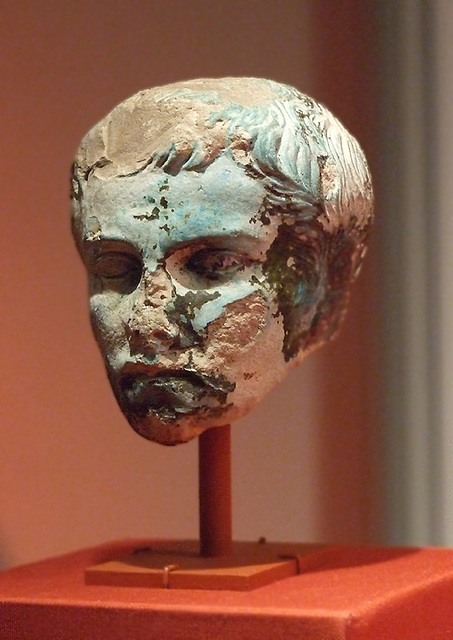Head of Augustus in the Metropolitan Museum of Art…
Terracotta Amphora Attributed to the Manner of the…
Terracotta Tumbler in the Metropolitan Museum of A…
Terracotta Kylix Attributed to Onesimos in the Met…
Detail of a Terracotta Kylix Attributed to Onesimo…
Detail of a Terracotta Kylix Attributed to Onesimo…
Terracotta Plate Attributed to Paseas in the Metro…
Detail of a Terracotta Plate Attributed to Paseas…
Terracotta Thymiaterion in the Metropolitan Museum…
Detail of a Terracotta Thymiaterion in the Metropo…
Madonna and Child by the Master of the Magdalen in…
At the Milliner's by Degas in the Metropolitan Mus…
Detail of At the Milliner's by Degas in the Metrop…
Detail of At the Milliner's by Degas in the Metrop…
Barges at Pontoise by Pissarro in the Metropolitan…
The Pink Dress by Morisot in the Metropolitan Muse…
Detail of The Pink Dress by Morisot in the Metropo…
Detail of The Pink Dress by Morisot in the Metropo…
Detail of The Pink Dress by Morisot in the Metropo…
Breton Fishermen and their Families by Ribot in th…
Portrait of a Woman with a Dog by Fragonard in the…
Detail of a Portrait of a Woman with a Dog by Frag…
Detail of a Portrait of a Woman with a Dog by Frag…
Bronze Stauette of Jupiter Capitolinus in the Metr…
Bronze Plaque in the Shape of a Boar in the Metrop…
South Italian Bronze Cuirass in the Metropolitan M…
Bronze Shepherd in the Metropolitan Museum of Art,…
Detail of a Byzantine Pectoral with Coins and Pseu…
Byzantine Pectoral with Coins and Pseudo-Medallion…
Plaque with Dionysos in the Metropolitan Museum of…
Wooden Writing Tablets in the Metropolitan Museum…
Detail of The Prince Imperial and his Dog Nero aft…
The Prince Imperial with his Dog Nero after Carpea…
Chinaman with Bird in the Metropolitan Museum of A…
Cameo Pendant in the Metropolitan Museum of Art, J…
The Cravat in the Metropolitan Museum of Art, Apri…
Detail of a Girl in a Straw Bonnet by Carrier-Bell…
Girl in a Straw Bonnet by Carrier-Belleuse in the…
Figural Bell of Napoleon in the Metropolitan Museu…
19th Century American Chair in the Metropolitan Mu…
Settee Designed by Alma-Tadema in the Metropolitan…
French Bedstead in the Metropolitan Museum of Art,…
Side Chair in the Metropolitan Museum of Art, Janu…
Plaque with Hercules and Achelous in the Form of a…
Detail of a Capodimonte Pottery Seller in the Metr…
Location
Lat, Lng:
You can copy the above to your favourite mapping app.
Address: unknown
You can copy the above to your favourite mapping app.
Address: unknown
See also...
Keywords
Authorizations, license
-
Visible by: Everyone -
All rights reserved
-
433 visits
Head of Augustus in the Metropolitan Museum of Art, Septenber 2010


Head of Augustus, Roman Period, 27–20 b.c.
Egyptian
Blue-green (glassy?) faience
H. 2 5/8 in. (6.8 cm)
Purchase, Edward S. Harkness Gift, 1926 (26.7.1428)
With the defeat of Cleopatra VII and Marc Antony at the Battle of Actium in 31 B.C., Egypt became a Roman province under the direct control of the Roman emperor. Augustus assumed the traditional divine role of pharaoh in Egypt, portraying himself as the offspring of the gods. He made numerous additions to the major temples of Egypt and founded the Temple of Dendur. His administrative reforms brought economic and political stability to Egypt after the turmoil of the Ptolemaic era.
This small head from Memphis may have come from a statue dedicated to the cult of the emperor. The style is completely Roman and is similar to other portraits from early in his long reign. The choice of blue-green faience, however, reflects the Egyptian attributes of longevity and prosperity.
Text from: www.metmuseum.org/toah/works-of-art/26.7.1428
Egyptian
Blue-green (glassy?) faience
H. 2 5/8 in. (6.8 cm)
Purchase, Edward S. Harkness Gift, 1926 (26.7.1428)
With the defeat of Cleopatra VII and Marc Antony at the Battle of Actium in 31 B.C., Egypt became a Roman province under the direct control of the Roman emperor. Augustus assumed the traditional divine role of pharaoh in Egypt, portraying himself as the offspring of the gods. He made numerous additions to the major temples of Egypt and founded the Temple of Dendur. His administrative reforms brought economic and political stability to Egypt after the turmoil of the Ptolemaic era.
This small head from Memphis may have come from a statue dedicated to the cult of the emperor. The style is completely Roman and is similar to other portraits from early in his long reign. The choice of blue-green faience, however, reflects the Egyptian attributes of longevity and prosperity.
Text from: www.metmuseum.org/toah/works-of-art/26.7.1428
(deleted account) has particularly liked this photo
- Keyboard shortcuts:
Jump to top
RSS feed- Latest comments - Subscribe to the comment feeds of this photo
- ipernity © 2007-2025
- Help & Contact
|
Club news
|
About ipernity
|
History |
ipernity Club & Prices |
Guide of good conduct
Donate | Group guidelines | Privacy policy | Terms of use | Statutes | In memoria -
Facebook
Twitter

Sign-in to write a comment.